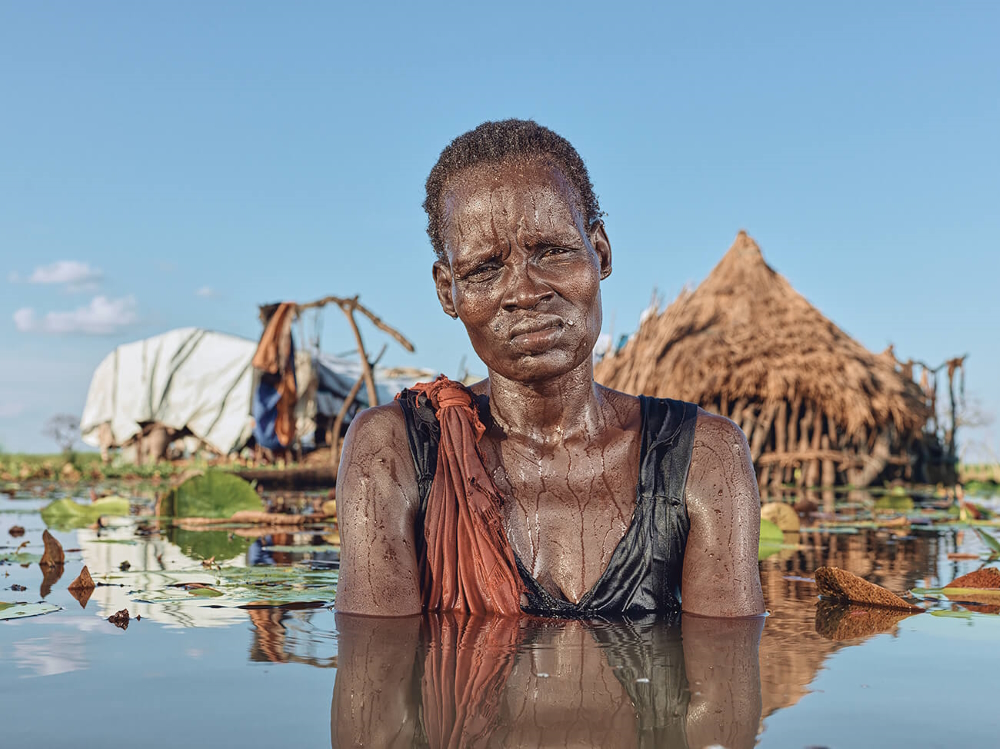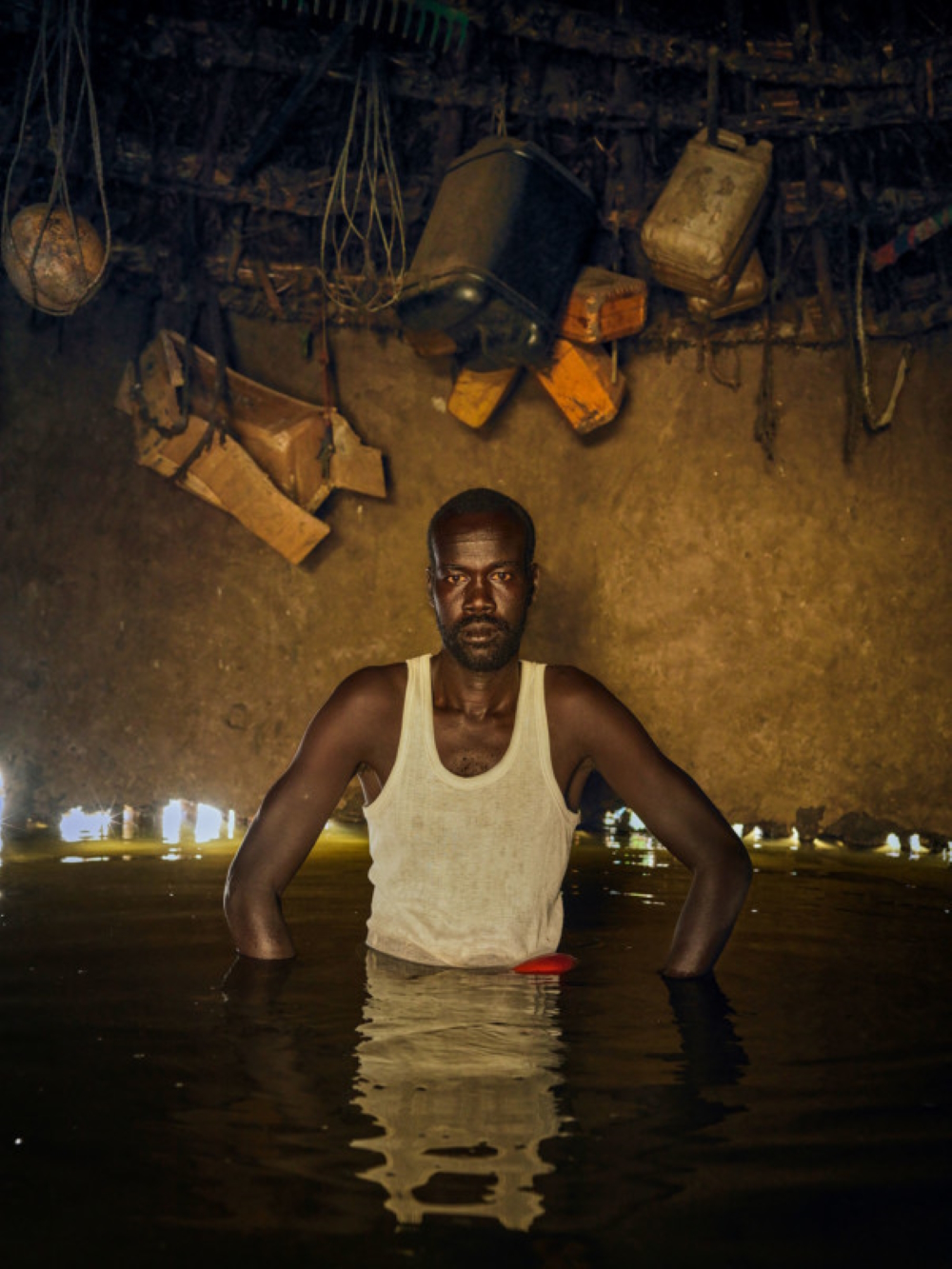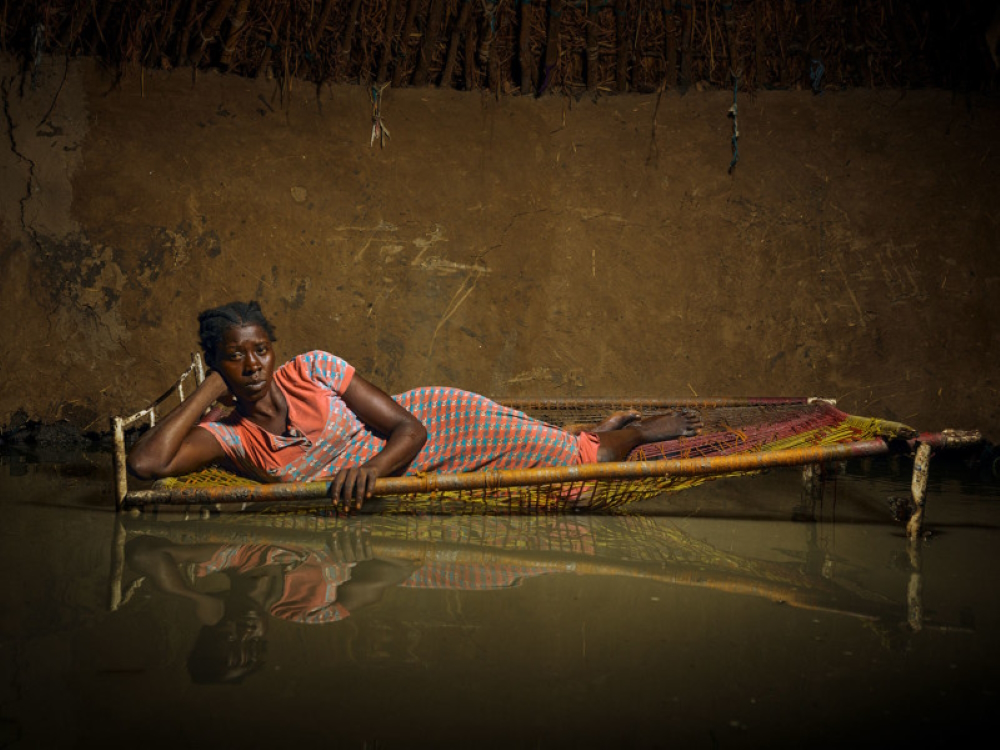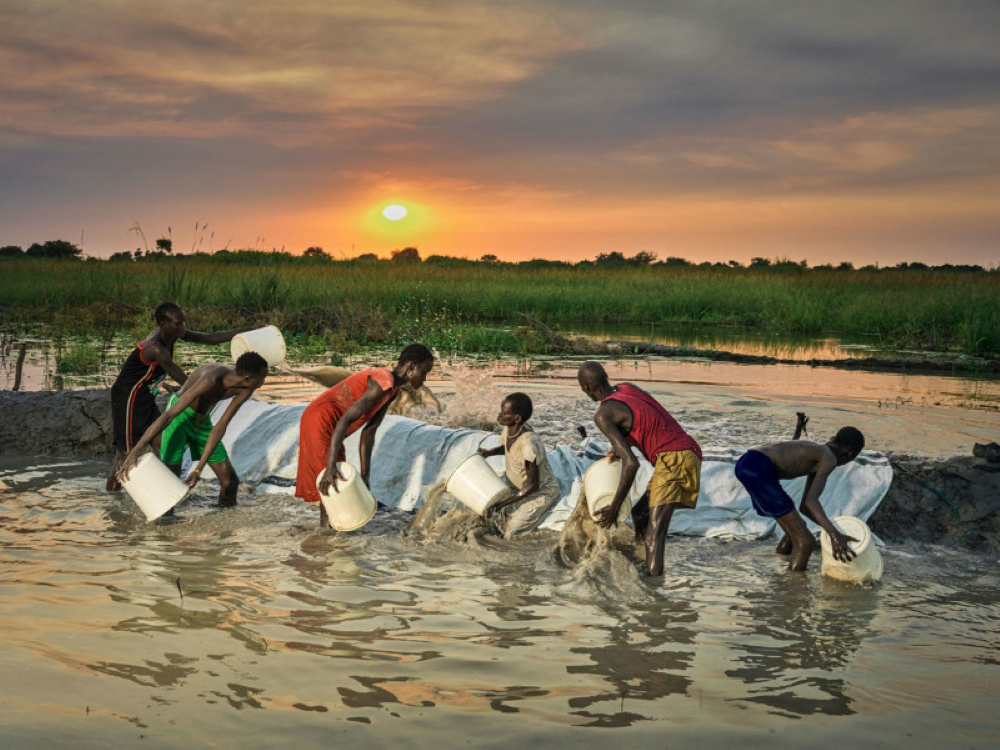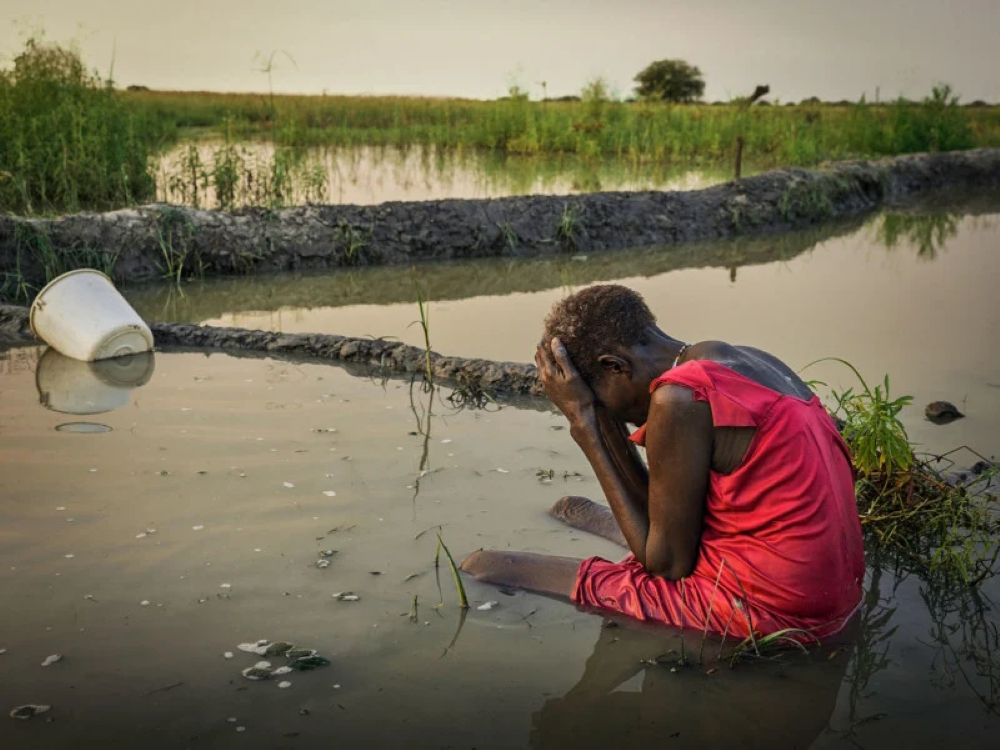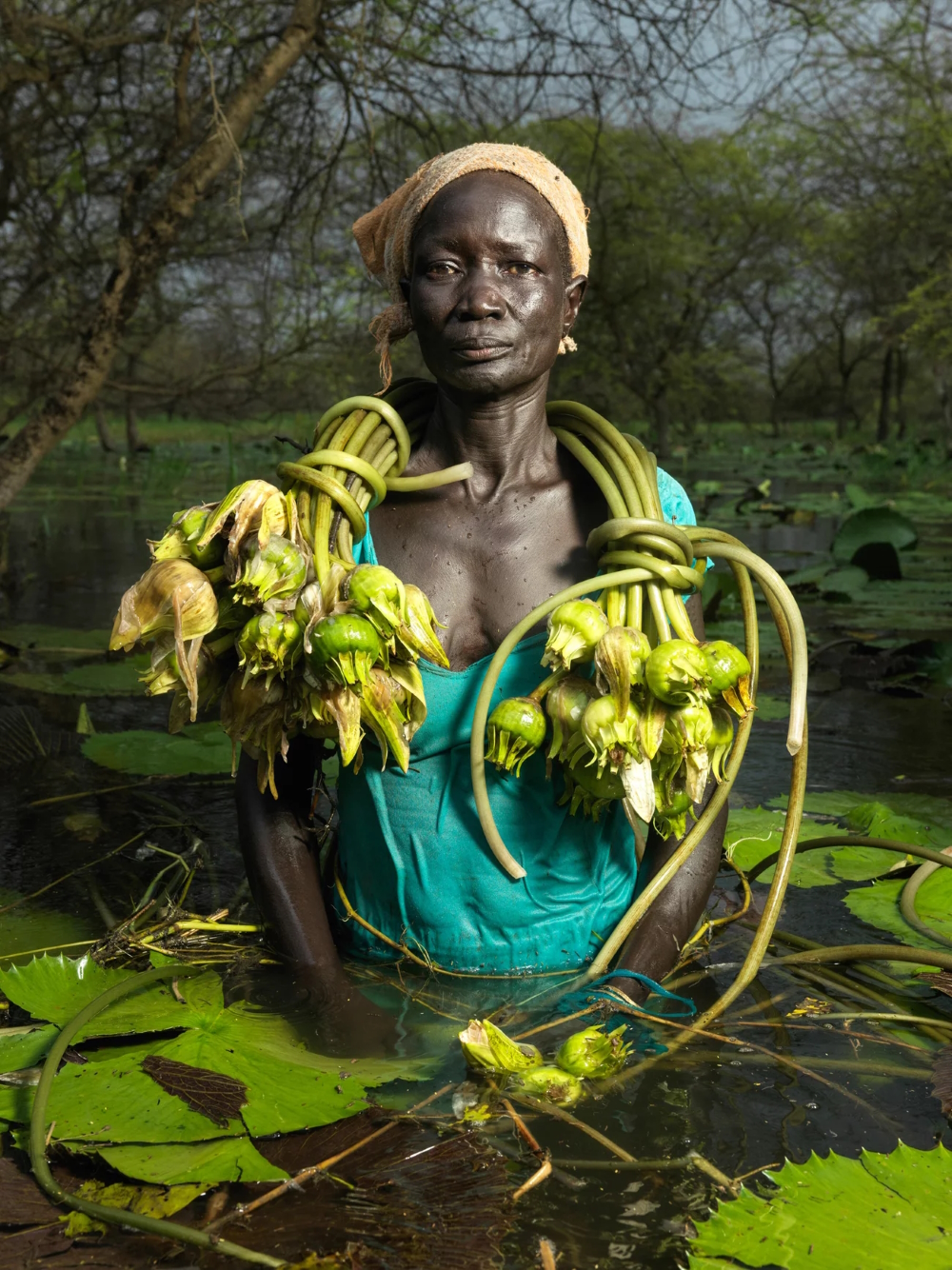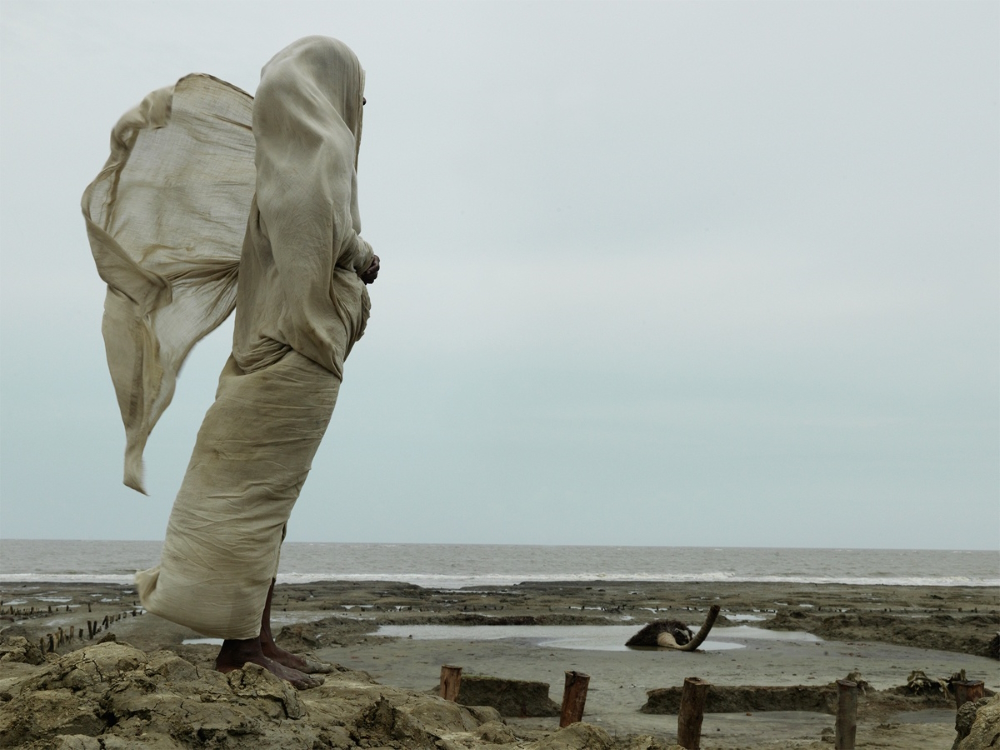Peter Caton
award-winning documentary photographer focusing on humanitarian issues
GB
A mother carries her two-year old daughter to dry land in a bucket. A man and his family have lost everything because of the relentless flood. A woman lies on her broken bed surrounded by water. An entire family works until sunset trying to scoop out floodwater that gushed into their land when a dike broke. Four examples of the series ‚Unyielding Floods‘ that won five awards including the International Photography Awards (IPA) in the editorial environmental category. "These images are heartbreaking but powerful“, IPA juror Cara Owsley, director of photography at the Cincinnati Enquirer (part of the USA Today network), said in a statement. „The photographer gives the viewer an informative but artistic view of the devastation in South Sudan." The praised shocking shots show perfectly the impressive skills of a British creative who focuses in his documentaries almost exclusively on humanitarian causes, disadvantaged groups and some of the great global crisis of our age.
Peter Caton
award-winning documentary photographer focusing on humanitarian issues
GB
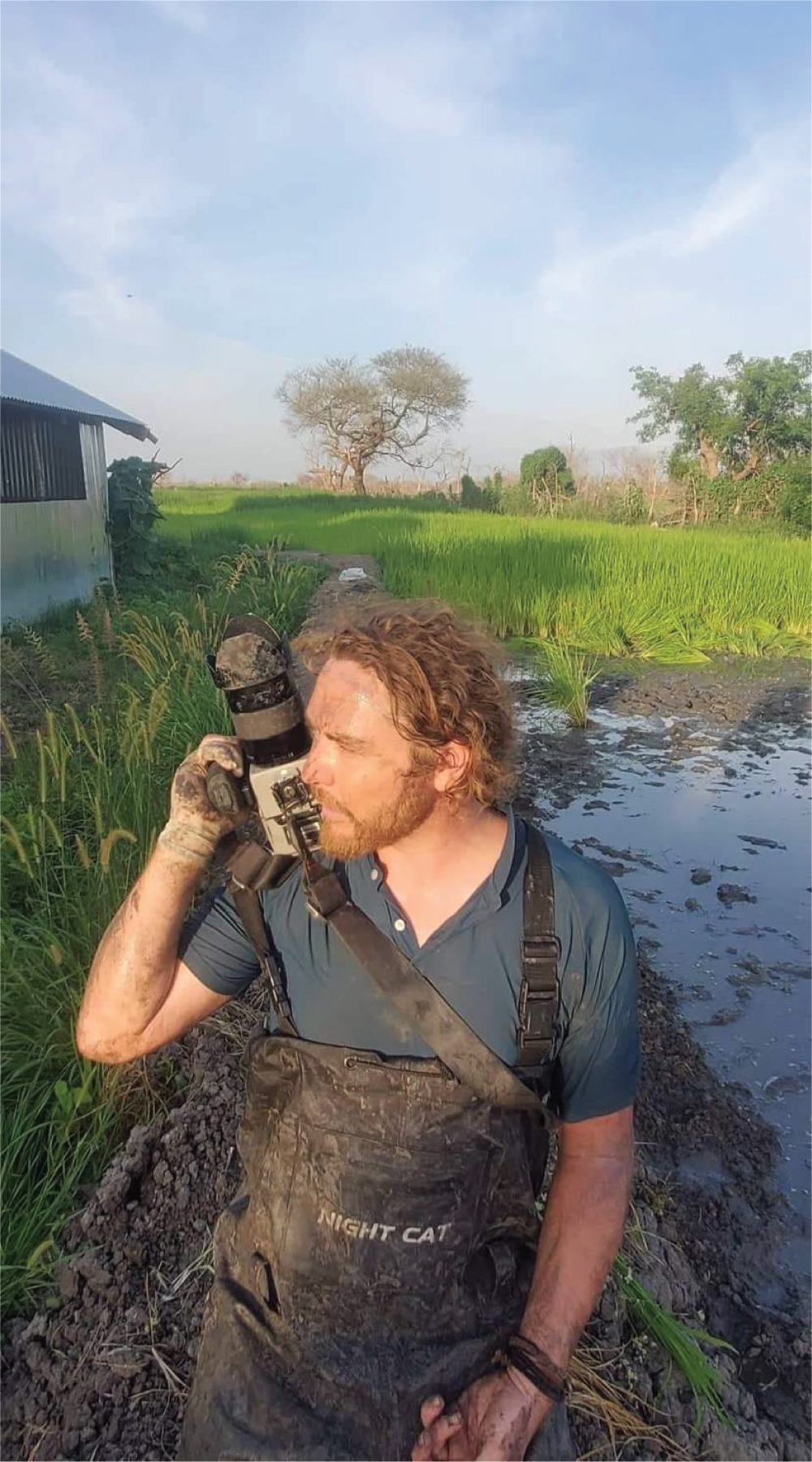
A strong moral impact on Peter Caton was, according to his homepage, the fact that his parents ran a large children’s home. „Their involvement in social work raised Peter’s awareness of social issues and foreshadowed his own career as a photojournalist.“
The Scarborough-native (* 21 February 1976) received his degree in photography in Middlesborough, where he gained firsthand experiences of the hardships of working class life in Northern England. Caton junior then worked in factories to save money to travel to India for half an year. The photos he took of the Bhopal gas disaster were published in Marie Claire UK. His portraits of the victims of leprosy were exhibited at the National Portrait Gallery in London.
After several trips to Asia in early 2006, PCcommitted himself to living out of two rucksacks and working on the sub-continent as a full-time freelance professional photographer. Much of his output that covers a wide range of subjects including climate change, drought, famine, leprosy, eyesight, gender and sexuality as well as mother and child mortality, is commisioned by aid organisations, charities and leading non-govermental organisations. His clients include Action Against Hunger, CARE International, Greenpeace, Oxfam, Save The Children, The Red Cross, UNAIDS, UNHCR, UNICEF, WWF and World Food Program.
„In 2007 Peter agreed to undertake a study on climate refugees in the Sudarbans regions of India. The trip opened his eyes to the scale of change the planet is undergoing due to global warming. Shortly thereafter, in November 2007, the Bangladeshi part of the Sundarbans was inundated by Cyclone Sidr. Peter Caton was able to document the aftermath of that catastrophe. Trips as such helped shaping his views on the human impact on climate change. This has been the main focus of his work ever since. To communicate those stories to the public photographic exhibitions are an important vehicle of communication. `The Sinking Sunderbans‘ exhibition has traveled internationally since 2010 and was shown in cities around the world – from Europe to Asia, South America to the US.
In 2011 the Englishman who uses a digital H5D-50c Hasselblad camera and a mobile lighting setup documented Brazil’s cerrado. I’s the most bio-diverse savannah on the planet, an unique habitat in danger from the agribusiness and monoculture. 2015 saw him presenting an outdoor exhibition in Milan of his global photo essay called ‚Food For Life‘. In 2020 the man documented the devastating floods in South Sudan. The photographic intensity of the work led to publications in major news outlets like The Sunday Times (UK), The Guardian (UK), El Pais (Spain) and Corre Della Sera (Italy). Besides the mentioned ones his photos were printed in Esquire, Le Figaro (France), The Washington Post among others.“
„These exceptional photographs need little commentary“, states readframes.com applicable. „You do not need a single word to see the stories in the images. The viewer can draw their own accurate inferences and come to conclusions about what is going on. This is photography at the core of the medium: pictures which tell you a story. In this case, a very real one.“
The immense dedication and commitment to the remarkable projects by Mr. Caton is profoundly impressive – even his raising awareness photographs make an uncomfortable but vital viewing. They are now and then jarring as well as tragically poetic at the same time. “Regardless of what it is when I see injustice or inequality, I am impassioned and motivated to help,” Caton is quoted on petapixel.com. “The destruction of the environment has always been a driving force behind my images. I have always been fascinated by the wonder of nature, so the activism fusion makes sense. There is a sense of responsibility that I feel when I am uncovering an untold disaster.” In the conversation with npr.com he revealed his basic motivation: “If I don't take these photos, who will? Who will see this? This is part of my activism, to show people what is happening.“ Bearing in mind his statement this photojournalist is in tune with the working spirit of a legendary colleague - Robert Capa. The man who „is considered by some to be the greatest combat and adventure photographer in history“ (Wikipedia) said: “If your pictures aren’t good enough, you’re not close enough.“ Another quote from the Hungarian US-American (1913-1954) who is one of the co-founders of the international photographic cooperative Magnum suits the visual testimonies here too: “You don’t have to pose your camera. The pictures are there, and you just take them. The truth is the best picture... It’s not easy always to stand aside and be unable to do anything except record the suffering around one.“
Peter Caton visits the UK once or twice a year, otherwise he travels the world for his assignments - in more than 35 countries so far as there is much to show that people are not aware of and the needs of the voiceless must be communicated!
Interview March 2023
Skills + passion + responsibility: provoke change by shine light into darkness
INTUITION/IMAGINATION
How does intuition present itself to you – in form of a suspicious impression, a spontaneous visualisation or whatever - maybe in dreams?
When living a life on the road you have to have your wits about you always and need to be in touch with your personal intuition.
Will any ideas be written down immediately and archived?
Ideas are always written down, usually when I am in the field and after editing my work from the day. New ideas come to me when I review my imagery.
?: How do you come up with good or extraordinary ideas?
I keep an eye on the news but most of my ideas come in the moment while I am taking the photo. It is a spontaneous business.
?: Do you feel that new creative ideas come as a whole or do you get like a little seed of inspiration that evolves into something else and has to be realized by endless trials and errors in form of constant developments up until the final result?
Due to the fact that I shoot reportage, we should not pre-plan ideas on shoots as that is being too premeditated. This goes against the ethics of the job. You should always have an open mind.
What if there is a deadline, but no intuition? Does the first fuel the latter maybe?
Deadline is everything and maybe deadline pressure does help you produce your best work.
INSPIRATION
What inspires you and how do you stimulate this special form of imaginativeness?
I am inspired when I am faced with injustice or suffering. I know I can help with my camera and I am focused on my role in this activism. This is my job as a socially aware documentary photographer.
?: How do you filter between ideas worthwhile pursuing and bad ones that you just let go of?
I think experience helps you know whether it is worthy or not. There are an infinite number of stories out there but you need to think visually and whether the story is a visual one or not.
Has it to appeal to you primarily or is its commercial potential an essential factor?
I don’t do any commercial photography and only work for humanity.
Do you revisit old ideas or check what colleagues/competitors are up to at times?
I try not to look at other photographers much. I would hate to steal ideas and so I stay away from being too heavily influenced by others.
CREATIVITY
Which time/place/environment suits your creative work process the best (tranquillity or pressure) and which path do you take from theory/idea to creation?
I would love to work during the golden hour (dawn and dusk) but working in hostile areas of Africa limits this for security reasons. Professional photography means you must produce amazing pictures all of the time and not just when the atmosphere is right. Due to this, I am constantly under pressure but testing myself shoot after shoot brings out progress in your work.
What is better in the realization process: speed and force creativity i.e. grasp the magic of the moment, or a slow, ripening process for implementation/elaboration?
I have to work spontaneously as that is the nature of my work, to think on your feet while you are face to face with the moment. That is the skill set connected to my work.
?: Do you have any specific strategies you use when you are feeling stuck creatively?
I go back to basics if I am stuck but a good night’s sleep and a reset helps a lot also!
How important are self-doubt and criticism (by others) during such a process i.e. is it better to be creative on your own, only trust your own instincts, or in a team?
I welcome criticism and if you don’t then how can you improve? I usually work in relative isolation so you need a lot of self-belief.
Should a creative always remain true to him-/herself including taking risks & going against the flow or must one, for reasons of (commercial) survival, make concessions to the demands of the market, the wishes of clients and the audience’s expectations?
Clients use me because they like my style. I trust in that and don’t give it too much time. I also have a brief but I use the brief only as a guideline and express myself naturally.
When does the time come to end the creative process, to be content and set the final result free - or is it work-in-progress with an endless possibility of improvement?
I haven’t even taken my best pictures yet! That is the only attitude that I embrace. I am very much still on a journey.
?: In case of failure or - worse - a creativity crisis how do you get out of such a hole?
I usually just keep going and know that the spark will come again. It is my sole income so I have little option. Just keep concentrating and put any doubt behind you.
SUCCESS
Should/can one resist the temptation to recycle a ‘formula’ one’s successful with?
Why should you not? If it is working then keep developing the style. Obtaining a style is important in photography.
MY FAVORITE WORK:
I am particularly proud of my latest award-winning work on the South Sudan floods. It is a very technically challenging place to work. The mosquitoes and the danger to your equipment meant that you are under pressure both physically and mentally. Every day you are wondering whether today would be the day you catch Malaria. To balance the South Sudan skin tone with the midday sun was a huge challenge which I overcame due to using flash.
